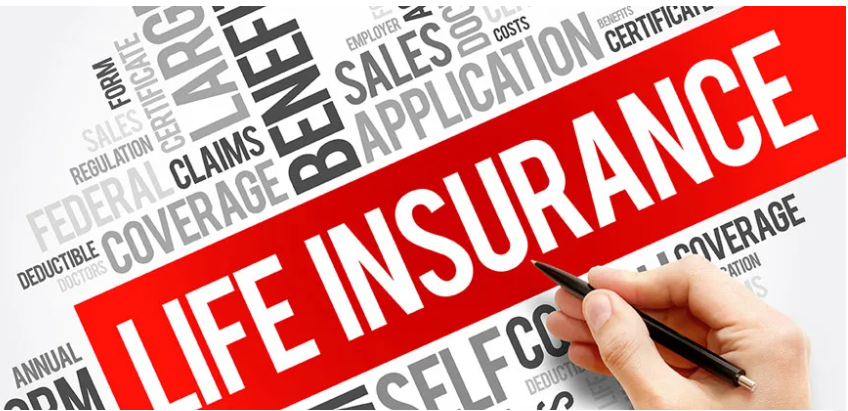Introduction to Insurance: A Primer
Insurance is a contractual agreement whereby an individual or entity receives financial protection or reimbursement against losses. The insurer is the company providing the coverage, while the insured is the person or entity covered. Key elements include:
- Premiums: Regular payments made by the insured to the insurer.
- Policy: The document detailing the terms and conditions.
- Claims: Requests for payment when a loss occurs.
- Deductibles: Amounts paid out of pocket before the insurer pays.
Insurance fundamentally operates on risk pooling, allowing insurers to provide coverage by spreading risks across multiple policyholders. This system ensures financial stability and support post-incident.
The Concept of Insurance: A Definition
Insurance is a contract between an individual or entity and an insurance company. It provides financial protection against potential future losses or damages. In this agreement, the insured pays premiums, and in return, the insurer commits to compensating for specified losses, damages, illnesses, or deaths.
Key Elements:
- Policy: A formal contract detailing terms and conditions.
- Premium: Periodic payment made by the insured for coverage.
- Claim: A request for payment based on insurance terms.
- Risk: The possibility of financial loss.
- Insurer and Insured: The provider of coverage and the recipient, respectively.
How Insurance Works: The Fundamentals
Insurance functions by pooling risk among many policyholders. When individuals purchase insurance policies, they pay premiums to the insurer. The insurer collects these premiums and creates a pool of funds.
Key Components:
- Policyholder: The individual or entity buying the insurance.
- Premium: The payment made to the insurer for coverage.
- Policy: The contract detailing terms, coverage, and conditions.
- Claim: A request made by the policyholder to the insurer for payment of a loss.
The insurer uses statistical analysis to predict losses and set premium rates, ensuring financial stability and payout capability.
The Significance of Risk in Insurance
In insurance, risk represents the potential for financial loss, encapsulating any scenario that might arise, from natural disasters to health crises. Insurers analyze risks to determine premiums, ensuring financial viability. Key points include:
- Risk Assessment: Insurers evaluate the likelihood and potential impact of various risks.
- Premium Calculation: Detailed assessments lead to setting premiums that reflect the insured risk.
- Risk Pooling: Spreading risk among many policyholders reduces the financial burden on any single individual.
- Mitigation Strategies: Insurers sometimes suggest ways to lower risk to reduce the possibility of claims.
These elements are foundational, intertwining the insured and insurer in a balance of risk-sharing and financial protection.
Types of Insurance Coverage: An Overview
Insurance coverage can be categorized into several main types:
- Health Insurance: Covers medical expenses, including treatments, surgeries, and sometimes prescription drugs.
- Auto Insurance: Provides coverage for vehicles in case of accidents, theft, or damage.
- Homeowners Insurance: Protects against damages to a home from perils like fire, theft, and natural disasters.
- Life Insurance: Pays a sum to beneficiaries upon the policyholder’s death.
- Disability Insurance: Offers income replacement if one becomes unable to work due to a disability.
- Travel Insurance: Covers trip cancellations, lost luggage, and medical emergencies abroad.
Life Insurance: Security for Your Loved Ones
Life insurance provides a financial safety net for policyholders’ dependents. By paying periodic premiums, insured individuals ensure a payout to their beneficiaries upon their death. This payout can cover:
- Funeral costs.
- Mortgage payments.
- College tuition.
- Outstanding debts.
There are different types of life insurance:
- Term Life Insurance: Offers coverage for a specific period.
- Whole Life Insurance: Provides lifetime coverage and accumulates cash value.
- Universal Life Insurance: Flexible premiums and death benefits; includes a savings mechanism.
Life insurance contracts are legally binding; hence, clear terms and policy conditions are essential.
Health Insurance: Protecting Your Most Valuable Asset
Health insurance provides essential financial support for medical expenses, ensuring that individuals can access necessary care without experiencing financial distress. It covers:
- Preventive Care: Regular check-ups, screenings, and immunizations to prevent illnesses.
- Emergency Services: Immediate medical attention for unexpected, urgent health issues.
- Inpatient and Outpatient Care: Hospital stays and services that don’t require hospitalization.
- Prescription Drugs: Medications necessary for treatment and management of conditions.
Health insurance helps in managing chronic conditions, ensuring long-term, consistent care.
By mitigating healthcare costs, health insurance safeguards one’s physical and financial well-being.
Property and Casualty Insurance: Safeguarding Your Tangible Assets
Property and casualty insurance protects physical items against loss, damage, or liability. This type of coverage is crucial for homeowners, vehicle owners, and businesses. There are two main categories:
- Property Insurance
- Protects real estate, personal property, or business assets.
- Provides coverage for perils like fire, theft, or natural disasters.
- Casualty Insurance
- Covers liability for property damage or injury caused to others.
- Examples include auto insurance and general liability insurance.
These policies help mitigate the financial impact of unforeseen events, ensuring stability for individuals and companies.
Auto Insurance: On the Road to Financial Protection
Auto insurance provides financial protection against physical damage or bodily injury resulting from traffic collisions. Key coverages include:
- Liability Coverage: Covers damages if the policyholder is at fault in an accident. Includes bodily injury and property damage.
- Collision Coverage: Pays for damage to the policyholder’s vehicle from a collision, regardless of fault.
- Comprehensive Coverage: Covers non-collision-related incidents like theft, vandalism, or natural disasters.
- Personal Injury Protection (PIP): Covers medical expenses for the policyholder and passengers.
Auto insurance is often mandated by law, ensuring all drivers can cover potential damages.
Understanding Policy Terms: Premiums, Deductibles, and Limits
Insurance policies include terms such as premiums, deductibles, and limits, each carrying significant impact.
- Premiums: These are regular payments made to maintain the policy. They vary based on coverage, risk factors, and policyholder’s profile.
- Deductibles: This is the amount the policyholder must pay before the insurer’s coverage begins. Higher deductibles can lower premiums.
- Limits: These define the maximum amount the insurer will pay for a covered loss. Limits can be per occurrence or over the policy term.
Understanding these terms is essential for evaluating and selecting suitable insurance coverage.
Insurance Claims Process: From Filing to Resolution
The insurance claims process involves several steps to ensure a claim is handled fairly and promptly.
- Filing the Claim:
- The policyholder submits a claim form.
- Necessary documentation, such as medical reports or repair estimates, is provided.
- Claim Review:
- The insurance company assigns a claims adjuster.
- The adjuster investigates the claim, verifying details and legitimacy.
- Evaluation:
- The insurer assesses policy coverage.
- Determination of payout amount if the claim is valid.
- Resolution:
- Approval and payout or denial of the claim.
- Policyholder is informed of the decision.
- Appeals (if applicable):
- Policyholder may appeal if dissatisfied with the outcome.
The Role of Insurance Companies: Providers of Security
Insurance companies serve as a crucial pillar in stabilizing the economy. They mitigate financial risks by offering various types of insurance products. Their primary roles include:
- Risk Assessment: Evaluating the risk associated with insuring an individual or entity.
- Underwriting: Determining policy terms and premium amounts.
- Claims Processing: Assessing and paying out claims as per policy agreements.
- Investment: Utilizing collected premiums to invest in diverse portfolios, thereby ensuring fund availability for future claims.
By offering these services, insurance companies provide a dependable security net, ensuring financial continuity and peace of mind for policyholders.
Regulatory Framework: Ensuring Fairness and Solvency in Insurance
A robust regulatory framework ensures that insurance companies operate fairly and remain solvent to protect policyholders. Key elements include:
- Licensing Requirements: Insurers must obtain licenses to operate, confirming their financial stability and compliance with legal standards.
- Solvency Regulations: Mandate minimum capital reserves to cover unexpected claims.
- Consumer Protection Laws: Safeguard policyholders from unfair practices and ensure transparent disclosures.
- Rate Approval Processes: Ensure premiums are reasonable and justified.
- Market Conduct Oversight: Monitors business practices and adherence to ethical standards.
- Periodic Audits and Reporting: Regular assessments validate ongoing solvency and compliance.
Challenges and Trends in the Insurance Industry
The insurance industry faces numerous challenges and emerging trends, requiring adaptability and forward-thinking strategies.
- Regulatory Changes: Adaptation to evolving local and global regulations increases administrative complexities.
- Technological Advancements: Integration of artificial intelligence, big data analytics, and blockchain technology is transforming operations.
- Cybersecurity Threats: Increased digitalization leads to higher exposure to cybersecurity risks, necessitating robust protective measures.
- Consumer Expectations: Growing demand for personalized and rapid services is driving innovation.
- Climate Change: Escalating natural disasters impact risk assessment and pricing models.
- Demographic Shifts: Aging populations influence insurance product offerings and strategies.
Adapting to these dynamics is crucial for maintaining relevance and competitiveness in the industry.
Conclusion: Making Sense of Insurance in Your Life
Understanding insurance involves recognizing its key role in protecting against financial loss. In one’s life, insurance enables:
- Risk Management: Mitigating potential financial losses from unforeseen events.
- Financial Planning: Ensuring assets, dependents, and future plans are safeguarded.
- Peace of Mind: Reducing anxiety about possible financial pitfalls.
To effectively integrate insurance, individuals should:
- Assess personal risks and coverage needs.
- Compare options and policies.
- Regularly review and update insurance plans.
A well-structured approach to insurance helps in building resilient financial security.


